Scholl interview: a blueprint for innovative TC applicants
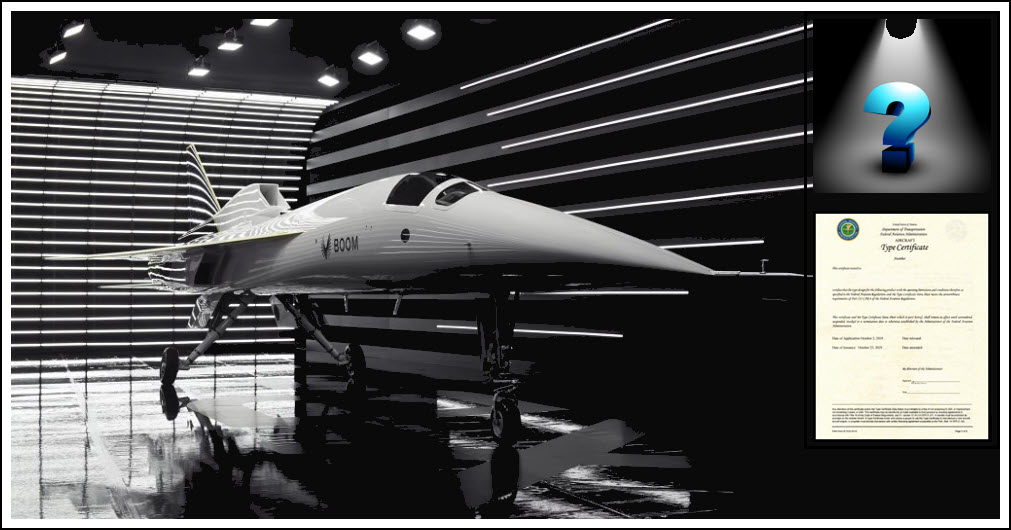

Advanced civil drones (UASs), green aircraft, air taxis, other eVTOL applications and a whole host of aerospace innovations are being created by this industry. Contemporaneously, a number of traditional type and production certificates are showing some cracks in their performance. On March 22,2024 BOOM Supersonic SUCCESSFULLY COMPLETED ITS PROTOTYPE XB-1’S FIRST FLIGHT.

That’s a significant first step in the long Part 25 Type Certification process, but the SimpleFlying article (see below) does a superb job of walking through all the steps that BOOM’s CEO BLAKE SCHOLL has carefully designed for the company’s challenging mission to bring a SAFETY-CRITICAL 400,000 POUND, SUPERSONIC AIRLINER to the globe. His thoughtful process, well described by JOE KUNZLER, not only establishes credibility for this disruptive technology, but his blueprint is an excellent trail to certification and beyond for all of the innovators seeking a TC for their technical visions.
First and foremost, Scholl clearly recognizes that the FAA must be fed with data. His roadmap recognizes that the certificating authority MUST have definitive proof as a predicate to any airworthiness determination.
His interview is replete with acknowledgement of the FAA hurdles that his team must meet. What is remarkable about his interview is that he walks through the FAA requirements without rancor. Past innovator/entrepreneurs have expressed with the FAA’s “bureaucratic delays.” Scholl does not.
Another lesson from the CEO’s discussion is that he sees each step as an opportunity to learn:
TECHNICAL LESSONS ARE LEARNED IN THIS ABOUT HOW YOU DESIGN AND OPTIMIZE A SUPERSONIC JET, FROM AERODYNAMICS TO PROPULSION TO SYSTEMS INTEGRATION.
Certification of a cutting edge technology is not a static, prescriptive method; the FAA staff is learning, too. There has not been an SST Part 25 certificate request since the 1970s and whatever knowledge that was acquired by that assignment is probably in some dusty FAA library and reflects a totally different technology. Entrepreneurs are not always endowed with an abundance of patience. Mr. Sholl seems to express that virtue.
Others in the initial steps of establishing a new aerospace endeavor can learn from another BOOM characteristic—the STATEMENT reflects what every similar nascent aeronautical start-up:
“We wanted to build a safety culture from the ground up. And we also wanted to learn how you run an airplane program.”
Scholl wants Boom Supersonic to be an organization where problems are openly discussed and resolved. Every workday, the organization starts by checking in to see if there are any safety or quality concerns.
The corollaries to the Scholl postulate is that candidates must show attention to detail, great interpersonal skills, a high degree of vision, a lifelong interest in learning and a record of teamwork. The technical hires are obviously essential to an innovative mission, but even within this category, the personnel staff should also look for these attributes.
It is easy to project that the XB-1 is transformed to the Overture given this thoughtful, appropriate development time line.

+++++++++++++++++++
Boom Supersonic Completes First Flight With XB-1 Demonstrator
PUBLISHED 3 DAYS AGO
Boom Supersonic XB-1 prototype has a first flight. Read on to see what XB-1 is testing and some thoughts from CEO Blake Scholl on the future of Boom.
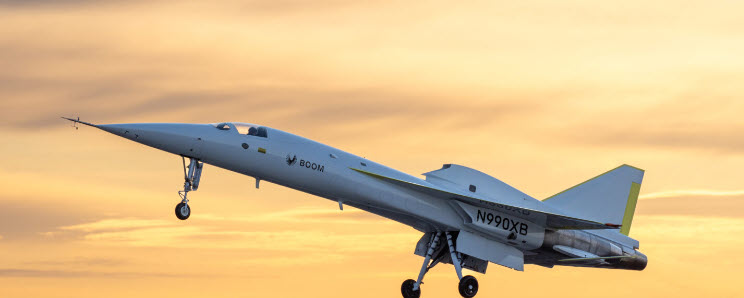
Photo: Boom Aerospace
SUMMARY
- XB-1 met test objectives in its first flight, a modest but crucial step towards supersonic travel revival.
- CEO Scholl emphasizes the importance of XB-1 in learning to build a safe and efficient supersonic airliner.
- Boom Supersonic aims to revolutionize supersonic travel and is eyeing a larger aircraft than Overture in the future.
It’s official: Boom Supersonic’s first aircraft, the XB-1, had its first flight today – March 22, 2024. For Boom Supersonic, the XB-1 is a test vehicle for building Overture, the first supersonic airliner since Concorde.
The first flight meets modest objectives.
According to Boom Supersonic, the XB-1, which carries registration N990XB, has MET “ALL OF ITS TEST OBJECTIVES” IN ITS FIRST FLIGHT. This initial test only saw the aircraft 7,120 feet above sea level and fly at a top speed of 238 knots (274 mph) – far from Mach 1, the speed of sound. The first flight of XB-1 took place at the Mojave Air & Space Port in California, in the same airspace where the X-1 broke the sound barrier, the X-15 conducted test flights for altitude and speed records, and the SR-71 Blackbird was also tested.
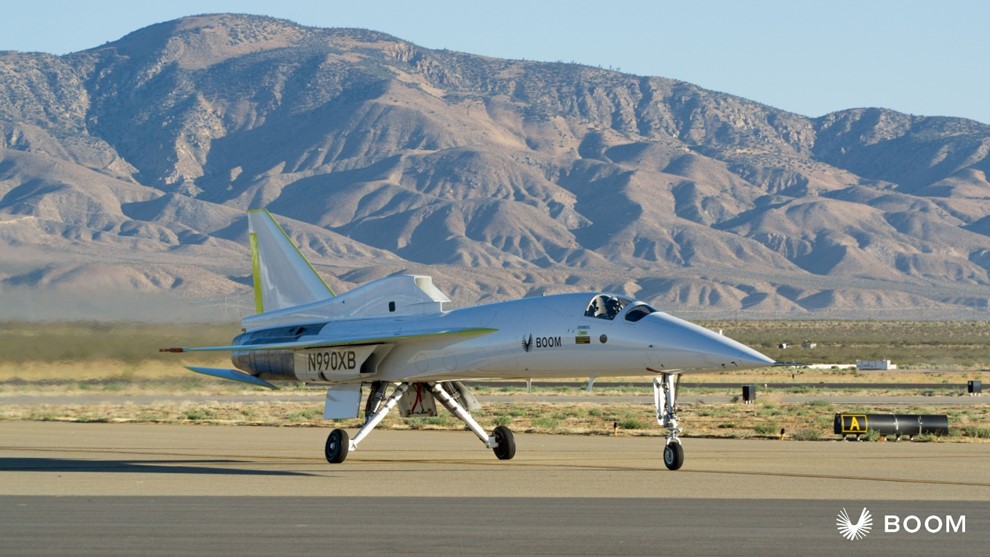
Photo: Boom Aerospace
XB-1 was flown by Boom Chief Test Pilot Bill “Doc” Shoemaker[1], while Test Pilot Tristan “Geppetto” Brandenburg[2] flew the T-38 chase aircraft that monitored the first flight.

Shoemaker is a FORMER US NAVY PILOT[3], and shared on this historic achievement,
“Everyone on the XB-1 team should be incredibly proud of this achievement. It has been a privilege to share this journey with so many dedicated and talented professionals. The experience we have gained in reaching this milestone will be invaluable to Boom’s revival of supersonic travel.”
Boom’s CEO Blake Scholl added,
“Today, XB-1 took flight in the same hallowed airspace where the Bell X-1 first broke the sound barrier in 1947. I’ve been looking forward to this flight since founding Boom in 2014, and it marks the most significant milestone yet on our path to bring supersonic travel to passengers worldwide.”

Photo: Boom Supersonic
But for Scholl, there’s more to XB-1 than just sharing the same historic airspace as the X-1, X-15, and SR-71.
CEO Blake Scholl notes the importance of XB-1
In an exclusive preview of the first flight, Boom kindly made CEO Blake Scholl available to Simple Flying. He shared with us,
“The way I think of XB-1 is, imagine, imagine what we’d be doing if we didn’t do it. We have a brand-new company. And the very first thing we’re going TO BUILD AS A PART 25, SAFETY-CRITICAL 400,000 POUND, SUPERSONIC AIRLINER… I consider myself very optimistic, but I don’t think even I believe that would work. And so we built this airplane to learn, to discover what we didn’t know, to discover what it really takes to build a civil supersonic airplane, one that’s safe enough to be flown by a human.”
Scholl went on to explain that XB-1 is not only intended to help Boom Supersonic learn how to build supersonic aircraft as the first new United States airliner manufacturer since the 1920s, but also,
TECHNICAL LESSONS ARE LEARNED IN THIS ABOUT HOW YOU DESIGN AND OPTIMIZE A SUPERSONIC JET, FROM AERODYNAMICS TO PROPULSION TO SYSTEMS INTEGRATION.
What the XB-1 will test
According to Boom, the XB-1 will be testing, among other things:
- Augmented reality vision system: Two nose-mounted cameras, digitally augmented with attitude and flight path indications, feed a high-resolution pilot display enabling excellent runway visibility. This system allows for improved aerodynamic efficiency without the weight and complexity of a movable nose.
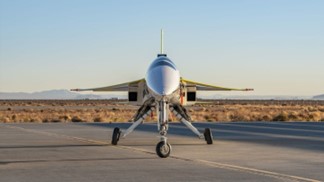
Photo: Boom Supersonic
- Digitally-optimized aerodynamics: Engineers used computational fluid dynamics simulations to explore thousands of designs for XB-1. The result is an optimized design that combines safe and stable operation at takeoff and landing with efficiency at supersonic speeds.
- Carbon fiber composites: XB-1 is almost entirely made from carbon fiber composite materials, enabling it to realize a sophisticated aerodynamic design in a strong, lightweight structure.
- Supersonic intakes: XB-1’s engine intakes slow supersonic air to subsonic speeds, efficiently converting kinetic energy into pressure energy and allowing conventional jet engines to power XB-1 from takeoff through supersonic flight.
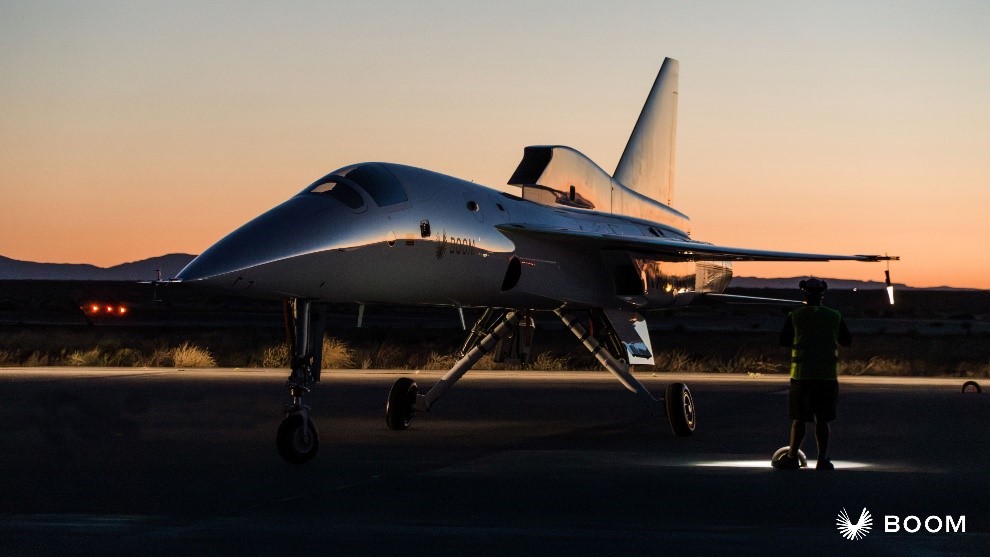
Photo: Boom Supersonic
Another thing being tested by XB-1 is the construction of a safety culture.
Building a safety culture at Boom Supersonic
CEO Scholl shared with Simple Flying just how fundamental to both the development of the XB-1 and the strategic goals of the company overall BUILDING A SAFETY CULTURE is. After all, the firm aims to build an aircraft safe enough to put a human on board; testing could have been undertaken with a remotely piloted vehicle (aka drone). As CEO Scholl shared,
“We wanted to build a safety culture from the ground up. And we also wanted to learn how you run an airplane program.”
Scholl wants Boom Supersonic to be an organization where problems are openly discussed and resolved. Every workday, the organization starts by checking in to see if there are any safety or quality concerns.
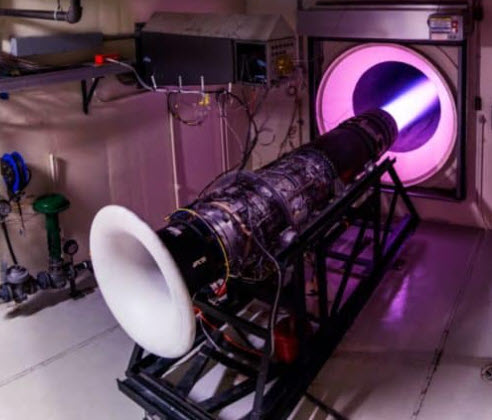
Additionally, CEO Scholl has learned from Boeing’s troubles with safety culture, sharing HOW ONE CAN HAVE A “WORLD-CLASS” SAFETY CULTURE BUT END UP BREAKING IT. BROKEN SAFETY CULTURE IS “REALLY HARD TO REBUILD.” For Scholl,
“If you’re thinking in the scale of decades, if you’re thinking about building a company, that you want to be here in 100 years, which is what we’re doing, then all of a sudden, doing the right thing is not in conflict with any other business goals. All aligned.”
Ultimate goals beyond XB-1
Scholl also shared with Simple Flying that Boom Supersonic has goals beyond building the Overture. Although Overture already has 130 orders and pre-orders from the likes of American Airlines, United Airlines, and others, there are plans for an Overture Two in the works already.
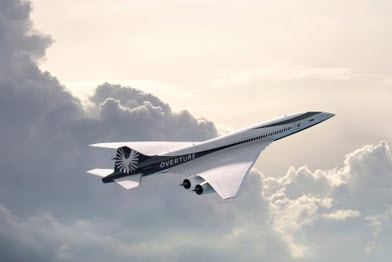
Photo: Boom Supersonic
Boom wants to build a larger Overture. Why? As Blake Scholl shared with Simple Flying:
“Human connection in person across distance matters. To enable a lot more of that, we can fly there faster, more affordable, more convenient, and more sustainable than what we have today. And so we’re on this new sort of multi-decade journey, not just to bring back supersonic passenger air travel, but to bring it back in a bigger way than ever had been, and ultimately to make it the main mode of transportation for all passengers across long distances – a very bold thing to do.”
The above is arguably why Boom Supersonic exists. To not just return but create egalitarianism for supersonic transport.
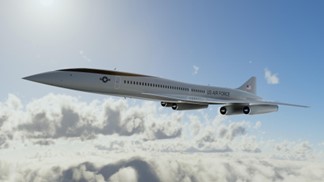
Graphic: Boom Aerospace
Scholl also reminded Simple Flying that Boom Supersonic is partnering with the US Air Force to develop supersonic transports so that diplomatic connections and insertions of special forces can be made to reduce the risk of global turmoil. Scholl indicated Boom Supersonic had no interest in a Boom product becoming a weapons platform at this time.
Bottom line
With XB-1 now a flying test vehicle, there are many flights ahead before we get to Overture One’s first flight, much less dramatically expanding access to supersonic flight. This work will require much engineering and a resilient safety culture. But the first flight of the first step was carried out by Boom Supersonic today, March 22, 2024.

+++++++++++++++++++
[1] https://boomsupersonic.com/flyby/xb-1-pilot-profile-bill-doc-shoemaker
[2] https://boomsupersonic.com/flyby/xb-1-pilot-profile-tristan-geppetto-brandenburg
[3] My boss is a former USN pilot; therefore, BOLDINGis mandated. Also, Brandenburg is a USNA graduate!!!